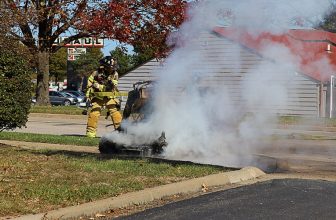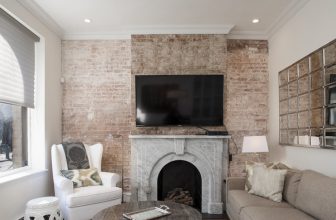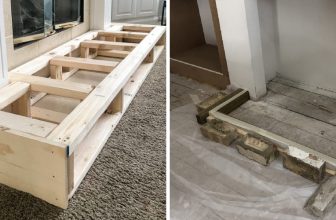How to Restore Brick Fireplace
Do you want to restore the beauty of your brick fireplace? Have you been looking for a quick and straightforward way to give your masonry an updated, polished look? Looking no further – With our guide on how to restore brick fireplaces, we’ll walk you through every step needed to refresh and revitalize any aged or dingy appearance, so that you can enjoy a beautiful fireplace once more.
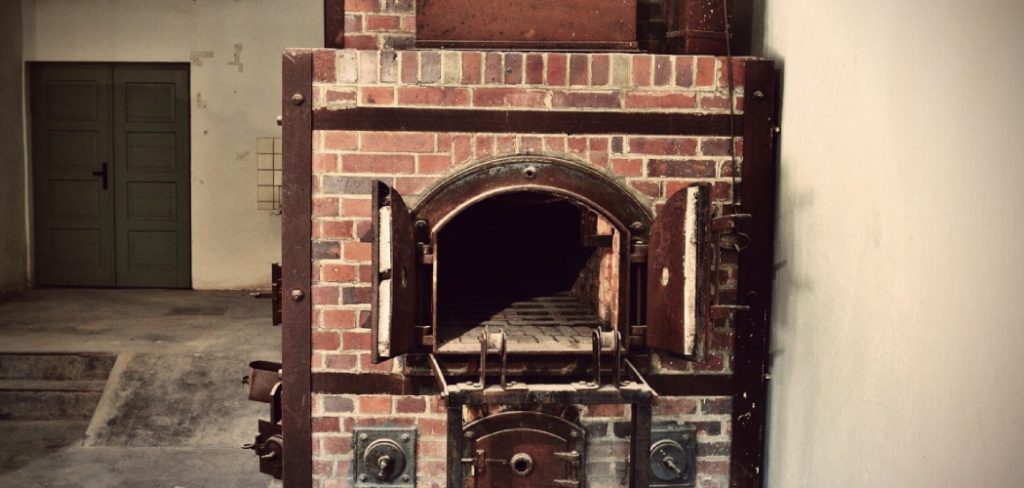
We’ll discuss all the necessary materials needed starting from mortar mixers, brushes, and trowels; in addition to other tidbits about safety equipment and materials that will help make this project successful. Join us as we break down this restoration process into easy steps!
Needed Materials
Below is the list of all materials that you need for this project. Make sure to wear safety gear such as gloves, a mask, and protective goggles before starting with the restoration process:
- Mortar Mixer
- Trowel
- Wire Brush
- Grinder
- High-pressure Washer
- Marine Sandpaper
- Masking Tape
- Protective Clothing
- Replacement Bricks, if Needed
- Marble Sealer and Enhancer (Optional)
- Sealant (Optional)
11 Step-by-step Guidelines on How to Restore Brick Fireplace
Step 1: Prepare the Fireplace
Before beginning, make sure that your fireplace is clear of any debris. Carefully remove the ashes and other materials in order to give yourself a clean slate to work with. Once you have done this, use a high-pressure washer or wire brush to get rid of all dirt and soot buildup from the surface. It is also important to make sure that the area around the fireplace is cleared of any combustible materials or furniture.
Step 2: Cleaning and Repairing Brickwork
Next, use a wire brush and a grinder to remove any old mortar from between the bricks. Be careful not to damage any of the brickwork while doing this. Once you’ve finished this step, use a trowel to repair any cracks or gaps in the brickwork with fresh mortar. But, be sure to leave the mortar mix a bit soft in order to make it easier to clean off an excess.
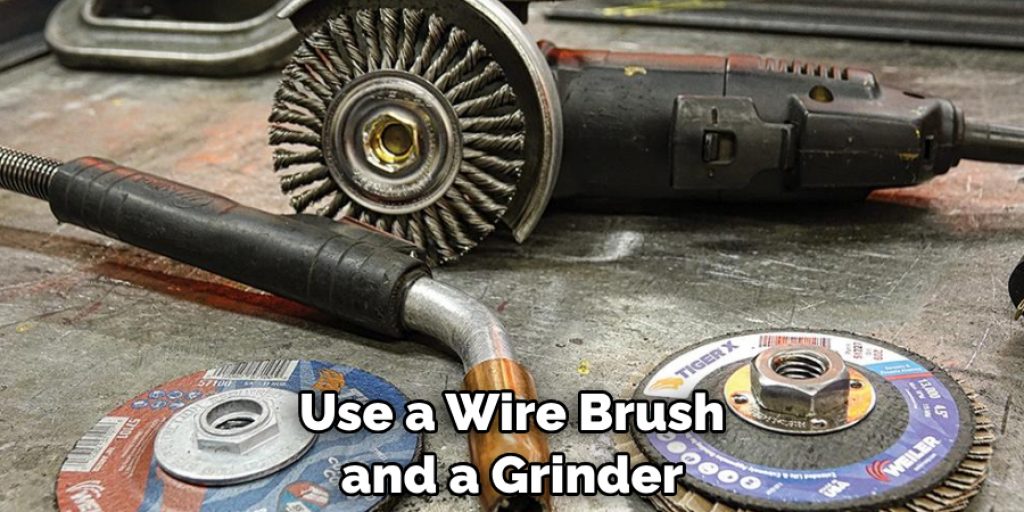
Step 3: Sealing and Enhancing
If you would like, you can apply a sealant to protect the masonry from moisture damage. You can also apply a marble sealer and enhancer to give your restored brick fireplace a polished, professional look. It is best to let these coatings dry for at least 24 hours before using the fireplace. This will ensure that the sealant and enhancer are properly set.
Step 4: Replacing Bricks
If you find that some of the bricks need to be replaced, use a mortar mixer to mix up a batch of fresh mortar. Then, apply it to the spot where you will place the new brick and carefully insert it into the hole using a trowel. It is important to apply enough pressure so that the brick fits snugly in its designated spot. You can also use marine sandpaper to clean up the edges of the new brick and match it with the existing masonry.
Step 5: Finishing Up
Once all the bricks have been replaced and/or repaired, use a dry cloth to clean up the excess mortar from the surface of the fireplace. Finally, make sure that any gaps between the newly inserted bricks are filled in with mortar again. It is always important to make sure that the mortar has completely dried before painting or staining the brickwork.
Step 6: Painting and Staining
If you would like to add color to your newly restored brick fireplace, you can either paint or stain the masonry. When using paints, it is important to use a high-quality paint that is specifically designed for brick and masonry surfaces. Alternatively, you can choose to stain the bricks with a water-based wood stain. This will give your fireplace an inviting aesthetic as well as help preserve its longevity.
Step 7: Applying Sealant and Enhancer
Once the paint or stain has completely dried, you can apply a sealer to protect the brickwork from moisture damage. You can also apply an enhancer to give your fireplace a polished look that will last longer. Make sure to follow the manufacturer’s instructions when applying either of these products. Otherwise, you may not get the desired result. But, always remember to let the enhancer and sealant dry for at least 24 hours before using the fireplace.
Step 8: Letting it Dry and Cleaning Up
It is important to let the sealant or enhancer completely dry before using your fireplace. Once it has dried, you can clean up any excess material from the surface of the brickwork with a dry cloth. It is best to wear protective clothing when dealing with any cleaning materials. But, make sure that all materials are entirely removed and the fireplace is completely dry before using it.

Step 9: Curing the Fireplace
Before you use the restored fireplace, it is important to fully cure it. Leave the fireplace unused and undisturbed for at least two weeks in order to allow the mortar and sealant to completely dry. It is also important to keep your fireplace covered during this time to prevent any dust or debris from entering. You can also use a dehumidifier to help in the curing process. It is best to use a dehumidifier with an adjustable thermostat for optimal results.
Step 10: Painting or Staining the Hearth
If desired, you can paint or stain your hearth as well. Make sure to use a sealant before and after painting or staining the hearth in order to preserve its longevity. But, be sure to let the sealant entirely dry before using your fireplace again. Although, it is not necessary to paint or stain the hearth; this step can help give your fireplace a cohesive appearance.
Step 11: Enjoying Your Restored Fireplace
Once the fireplace is fully restored, you can enjoy the beauty of your newly polished masonry! Relax by the warm firelight as you admire your handiwork and bask in the pride of restoring your fireplace to its former glory. Always remember to practice fire safety precautions when using your fireplace and refrain from burning any materials that are not meant to be burned.
Following the right steps on how to restore brick fireplace should save you time and money in the long run. Regular maintenance will keep your masonry looking its best for years to come. Make sure to inspect it regularly and take note of any signs of damage or deterioration. And of course, never forget to practice safety while restoring your brick fireplace!
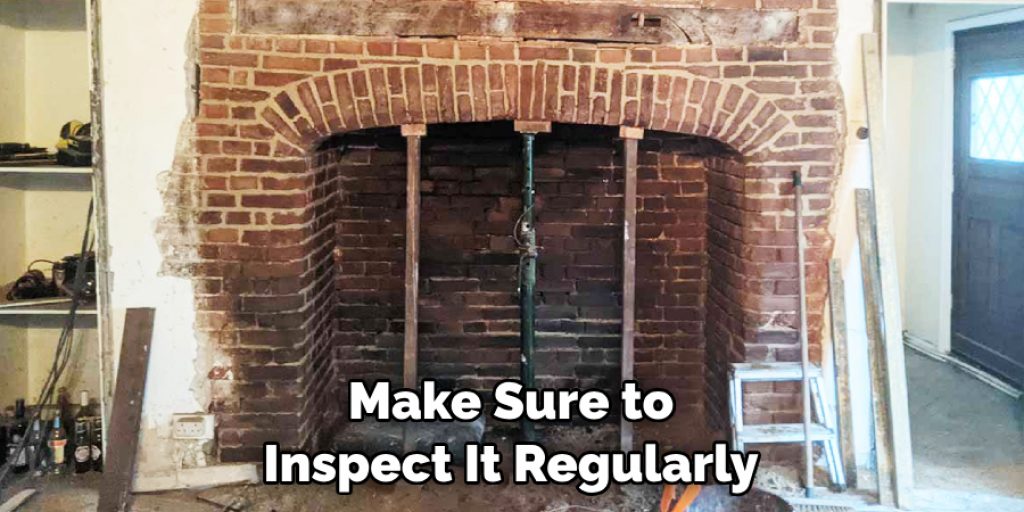
How Much Could It Cost?
Restoring a brick fireplace can cost anywhere from $400 to $1,000 depending on the size and complexity of the job. The cost may also be higher if you need to hire an experienced mason to do the work for you. However, it is important to remember that doing the job yourself will save you a lot of money in the long run without sacrificing the quality of the work.
Frequently Asked Questions
Q: What is the Best Way to Clean a Brick Fireplace?
A: The best way to clean a brick fireplace is by using a wire brush, grinder, and high-pressure washer. It is also important to wear protective gear such as gloves, goggles, and masks when cleaning.
Q: How Often Should I Check My Fireplace for Damage?
A: It is important to check your fireplace regularly for signs of damage or deterioration. This should be done at least once a year, or whenever you notice any changes in the brickwork. It is also important to practice safety while inspecting your fireplace.
Q: How Long Should I Wait Before Using My Newly Restored Fireplace?
A: It is important to let the mortar and sealant completely dry before using your restored fireplace. This can take up to two weeks, so be sure to wait until then before using it again. This will help ensure that your newly restored masonry lasts as long as possible.
Q: What is the Best Way to Freshen Up a Brick Fireplace?
A: The best way to freshen up a brick fireplace is by applying a marble sealer and enhancer. This will give your fireplace a polished, professional look as well as help preserve its longevity. You can also paint or stain the masonry if desired for an added aesthetic touch.

Conclusion
To restore your brick fireplace, be sure to start off with a thorough cleaning. Afterward, repair any loose pieces and replace any missing bricks as needed. If you’re painting an existing brick fireplace, patch the mortar lines first and then prep and prime the surface before applying the paint of your choice.
With some care and proper techniques, you can transform a worn-out brick fireplace into one that looks like new! This project is worth the effort and time you need to put into it, and in no time you’ll have a beautifully restored fireplace that will bring grandeur and elegance back to your home.
Finally, keep in mind that this is an ongoing process – regular maintenance should take place throughout the year to fully enjoy your restored brick fireplace for years to come! So if you’re ready to get started on rejuvenating your own brick fireplace, don’t wait; begin restoring it today! Thanks for reading this article on how to restore brick fireplace.

